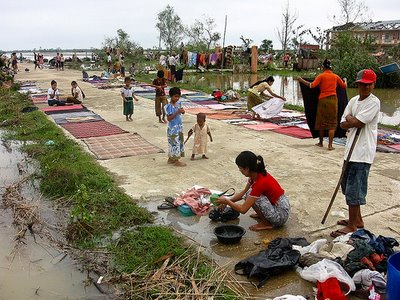News: From Cyclone Sidr to Cyclone Nargis - an aidworker's perspective

An aidworker from Oxfam explains how the immediate effect of the cyclone devastation is only the beginning of misery for those affected.
Those on the ground (in Myanmar) are estimating that at least 100,000 people were killed by the storm. The numbers are devastating, each one of them painfully reminding me what a difference an investment into disaster preparedness and early warning systems — like those that have been implemented in Bangladesh — could have made for the families in Myanmar.
Surface water that people are used to drinking is likely to be contaminated not only by dead bodies and livestock carcasses, but also human and animal waste spread by floodwaters and overflowing latrines. The weather forecast for this week predicts more heavy rain, and even a new storm approaching the cyclone-affected area. With people’s resistance to disease already weakened after days of living in overcrowded conditions without food and proper roofs over their heads, the children and elderly are likely to be among the worst affected.
Even once the floodwaters recede, they will leave behind a fertile breeding ground for flies and mosquitoes — bringing with them deadly threats like malaria and dengue fever (dengue season in Myanmar runs from May to October, the country had a major outbreak only last year). And I haven’t even begun to think about the psychological and emotional trauma that the storm has left behind. (Full)
Picture courtesy New York Times.
 Peter. Flemish, European, aid worker, expeditioner, sailor, traveller, husband, father, friend, nutcase. Not necessarily in that order.
Peter. Flemish, European, aid worker, expeditioner, sailor, traveller, husband, father, friend, nutcase. Not necessarily in that order.
0 comments:
Post a Comment